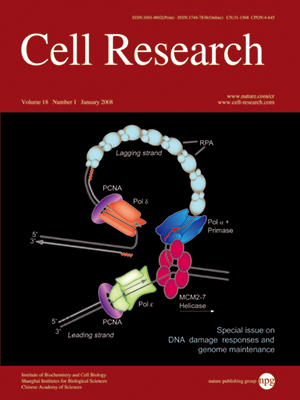
Volume 18, No 1, Jan 2008
ISSN: 1001-0602
EISSN: 1748-7838 2018
impact factor 17.848*
(Clarivate Analytics, 2019)
Volume 18 Issue 1, January 2008: 17-26
REVIEWS
DNA damage-induced cell death: lessons from the central nervous system
Helena Lobo Borges1,2, Rafael Linden3, Jean YJ Wang1
1Division of Hematology/Oncology, Moores Cancer Center, Department of Medicine, University of California, San Diego, 3855 Health
Sciences, La Jolla, CA 92093-0820, USA; 2Departamento de Anatomia, Instituto de Ciências Biomédicas, Universidade Federal
do Rio de Janeiro, Centro de Ciências da Sa鷇e, Cidade Universitária, 21940-590 Rio de Janeiro, Brazil; 3Instituto de Biofísica
Carlos Chagas Filho, Universidade Federal do Rio de Janeiro, Centro de Ciências da Saúde, Cidade Universitária, 21940-590 Rio
de Janeiro, Brazil
Correspondence: Jean YJ Wang(jywang@ucsd.edu)
DNA damage can, but does not always, induce cell death. While several pathways linking DNA damage signals to mitochondria-dependent and -independent death machineries have been elucidated, the connectivity of these pathways is subject to regulation by multiple other factors that are not well understood. We have proposed two conceptual models to explain the delayed and variable cell death response to DNA damage: integrative surveillance versus autonomous pathways. In this review, we discuss how these two models may explain the in vivo regulation of cell death induced by ionizing radiation (IR) in the developing central nervous system, where the death response is regulated by radiation dose, cell cycle status and neuronal development.
Cell Research (2008) 18:17-26. doi: 10.1038/cr.2007.110; published online 18 December 2007
FULL TEXT | PDF
Browse 1901


